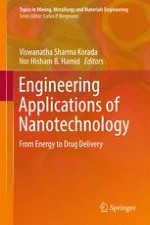2017 | OriginalPaper | Buchkapitel
Application of Nanotechnology in Cancer Treatment
verfasst von : Biswa Mohan Biswal, Zamzida Yusoff
Erschienen in: Engineering Applications of Nanotechnology
Aktivieren Sie unsere intelligente Suche, um passende Fachinhalte oder Patente zu finden.
Wählen Sie Textabschnitte aus um mit Künstlicher Intelligenz passenden Patente zu finden. powered by
Markieren Sie Textabschnitte, um KI-gestützt weitere passende Inhalte zu finden. powered by
